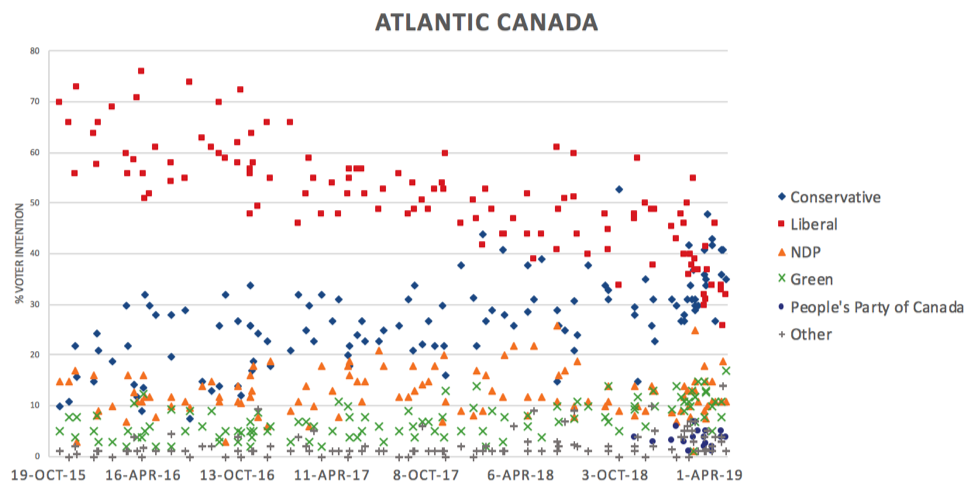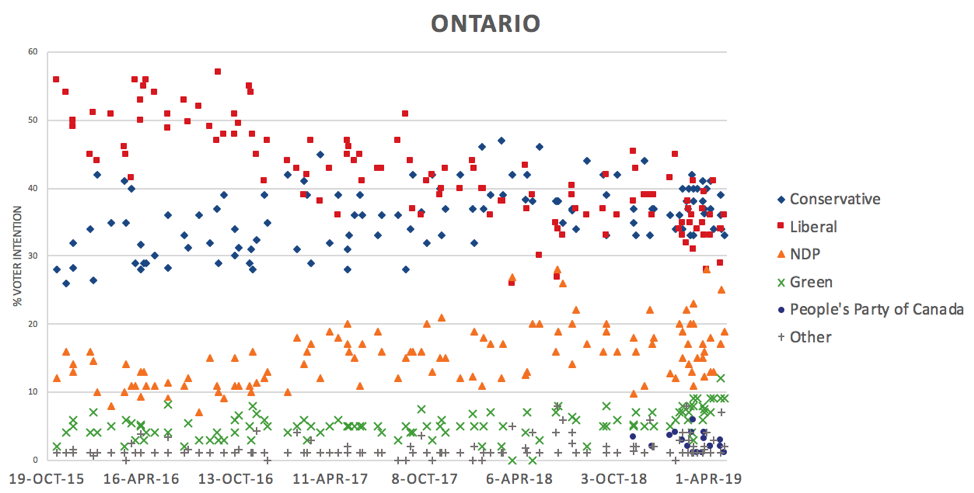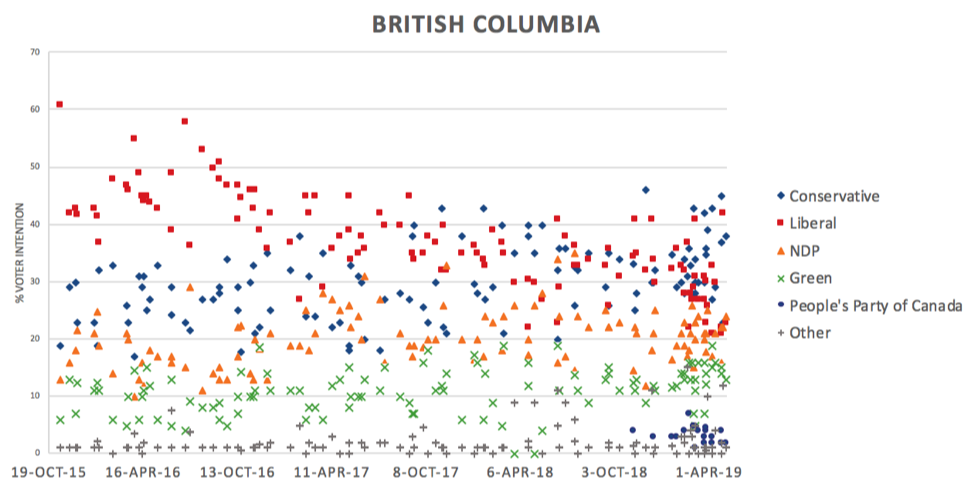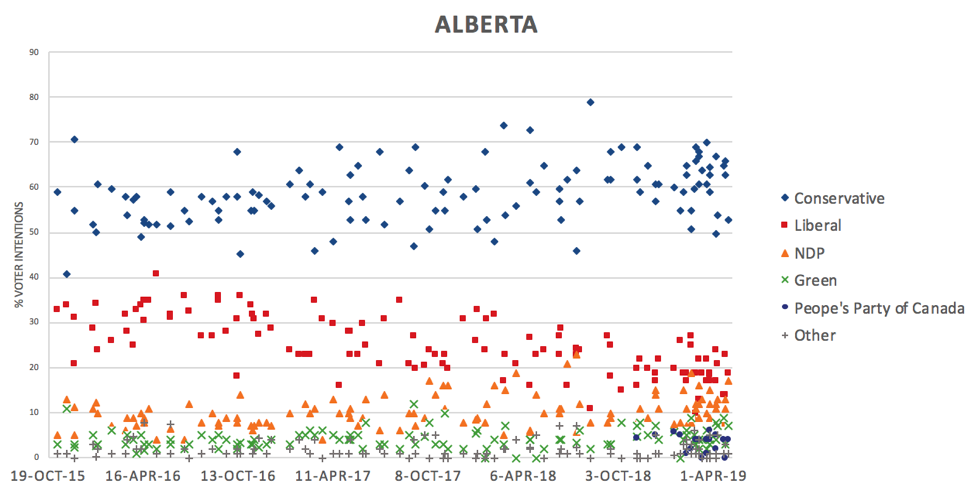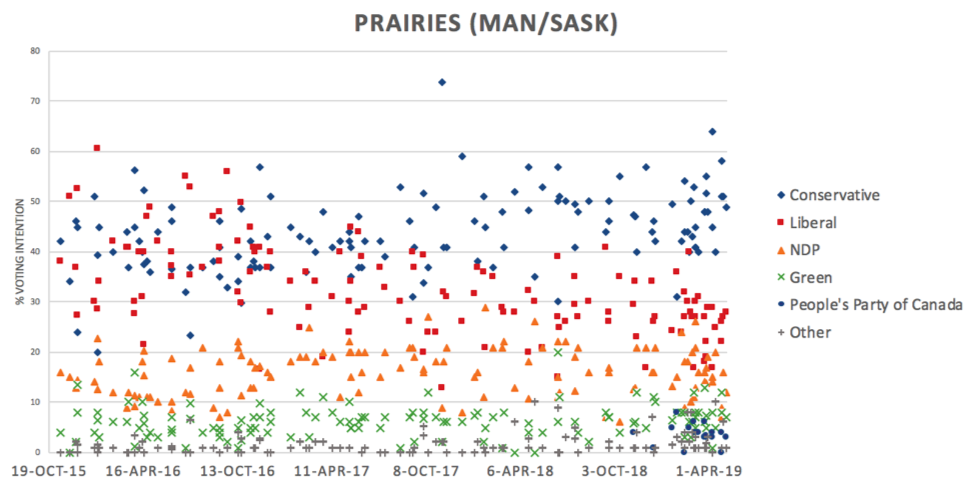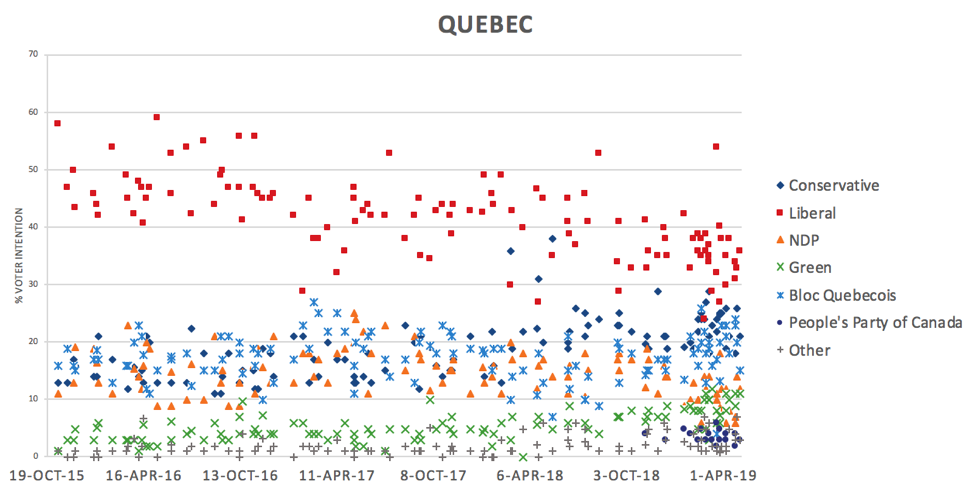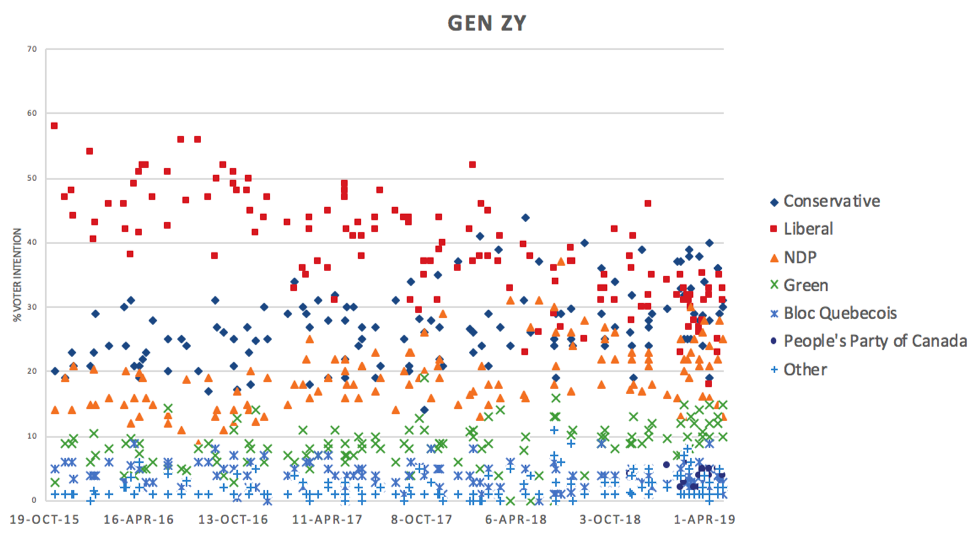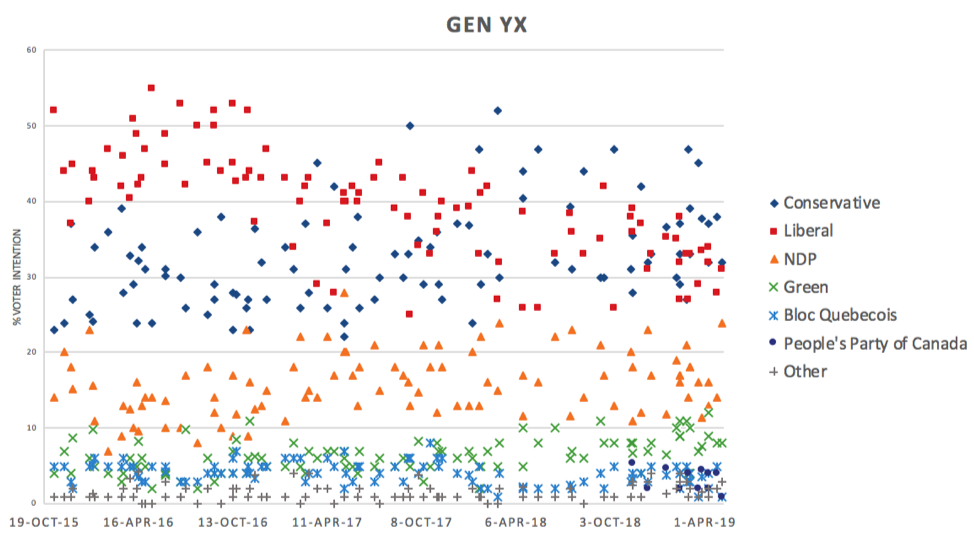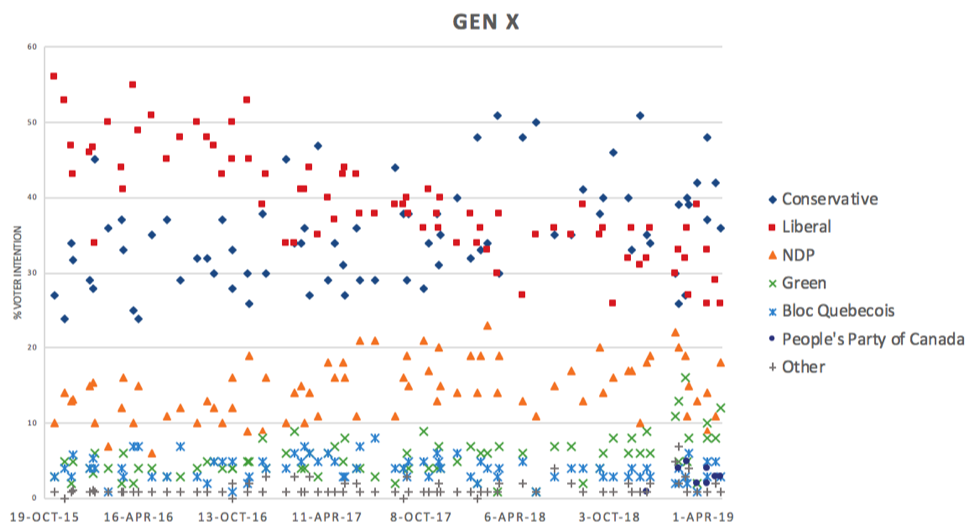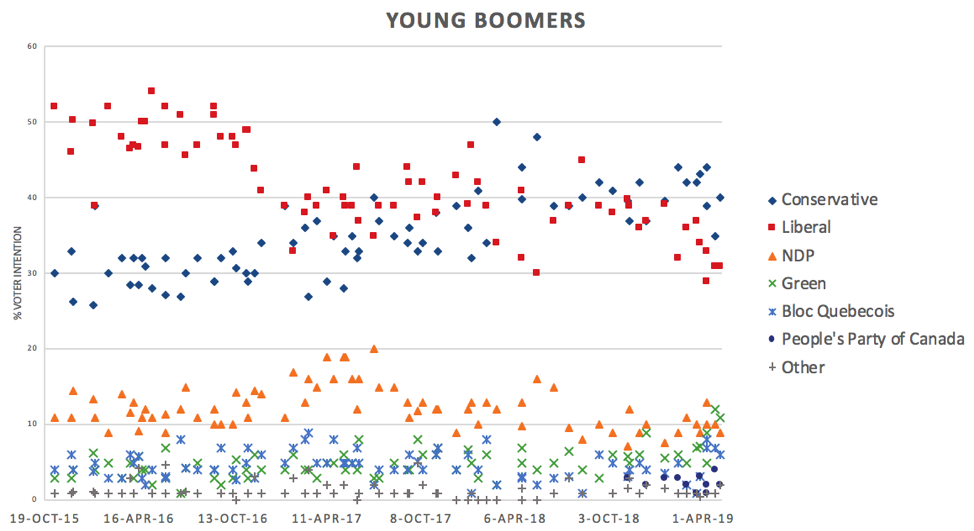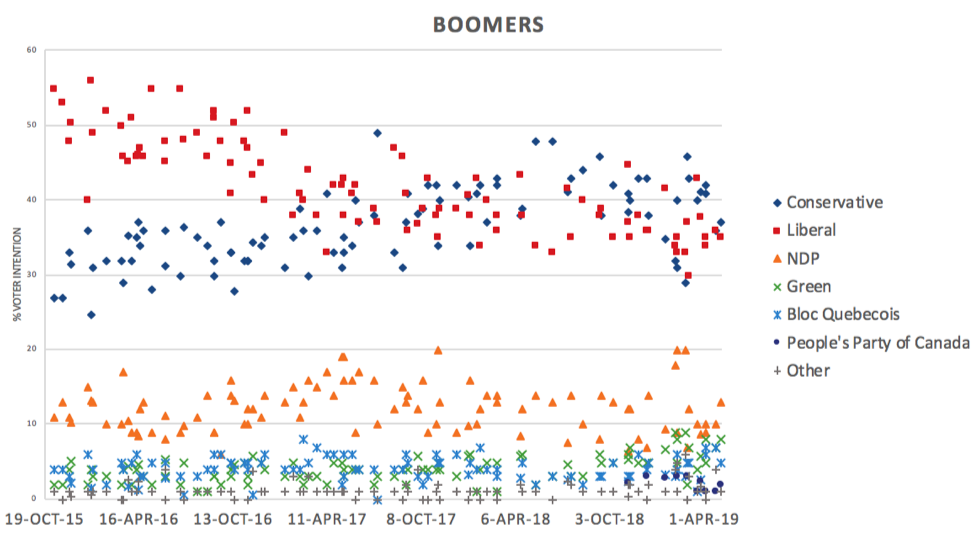By Suhani Singh
The June 7, 2018 Ontario General Election saw the Progressive Conservative Party defeat the Liberal Party to take power. The election was historic in many ways including a greater voter turn out than previous years and the Liberal Party losing its official party status by a mere one seat. The opinion polls conducted before and during the campaign period allowed Ontario voters to get a sense of what was occuring during this time and predicted the election outcomes rather accurately.
This blog series will consist of four blogs analyzing how the polls compare to the actual election results and how each party performed amongst different demographics. Polling data from March 11 to June 6 was collected from polling firms reported in Wikipedia during the precampaign and campaign period to create scatter graphs for better visualization.
This first blog will examine the overall trends in polling and explain the methodology used. The subsequent three blogs will explore how the parties performed by age group, gender, and region in the polls, noting any trends or similarities to the election results.

The graph above gives a snapshot of public opinion and voting intentions for all of Ontario during pre-campaign and campaign period for the 2018 Ontario General Election campaign period. The Conservatives had relatively stable support during the pre-campaign period polling over 40% in some polls, falling only slightly during the campaign period between 30% – 40%. This may be an example of the Conservatives peaking too early, though it did not cost them a majority government.
As the campaign period approached, support for NDP saw an increase from 20% – 30% to approximately 25% – 35%, almost reaching 40% throughout late May and early June. The turning point for the NDP and the election overall began when the leaders had their first debate on May 7, 2018 where voters saw that they had another option. From this point onwards, a rise in NDP support is clearly visible.
Support for Liberal Party took a more significant dip in the polls. Starting off with nearly 25% support in the precampaign period in March and April, the Liberals fell below 20% closer to the election, putting them significantly below the Conservatives and NDP. As a result of declining support numbers, the Liberals lost the election, ending their 15 years of power in Ontario.
Methodology
A quick note on methodology, to compile the data for this graph and the other graphs in the blogs in this series, we collected polling data from March 11, 2018 (Doug Ford’s appointment as the leader of progressive Conservative Party) to June 6, 2019 (last day before the June 7thelection) that was reported in Wikipediaand CBC Poll Tracker. We looked at the polls which asked Ontarians about their voting intentions for the upcoming election and recorded data from the leaning and decided sample groups in each poll. The polling firms used included Forum Research, Abacus Data, Mainstreet Research, Ekos, Ipsos, Leger, Pollara and Campaign Research. We ommitted data from polling firms that asked the voter intentions question in a way that was not similar to other polling organization (mainly Nanos Research who asked for top two choices) and those that did not have detailed tables about decided and leaning voters. The support average for all of Ontario as analyzed in this blog includes a greater number of polls than other demographic groups as not all organizations broke down the polling data by demographics.
As previously mentioned this blog series will talk about different voting preferences among age groups, genders and regions. In the first follow up blog, the different voting preferences among males and females will be explored to see how they changed overtime.

